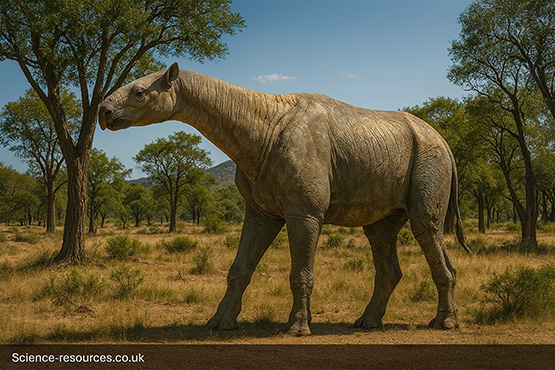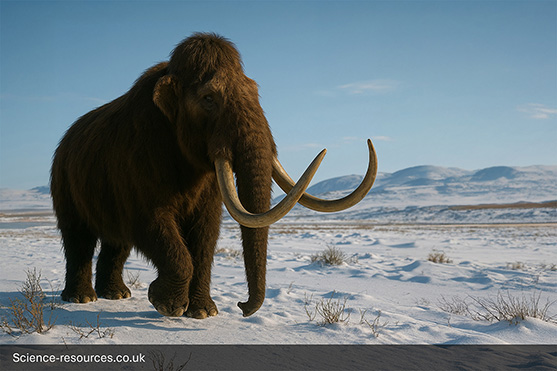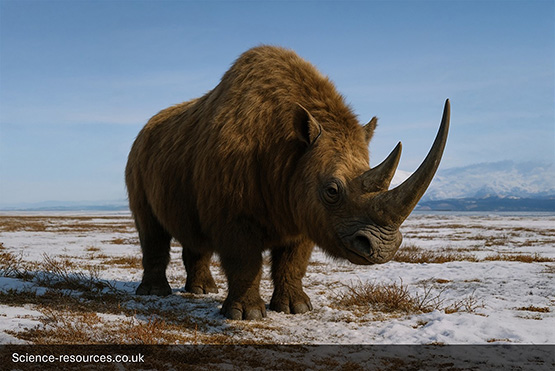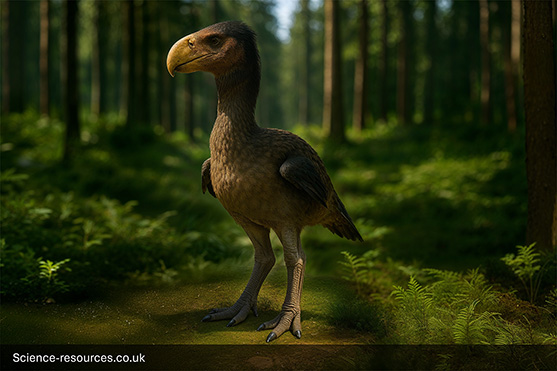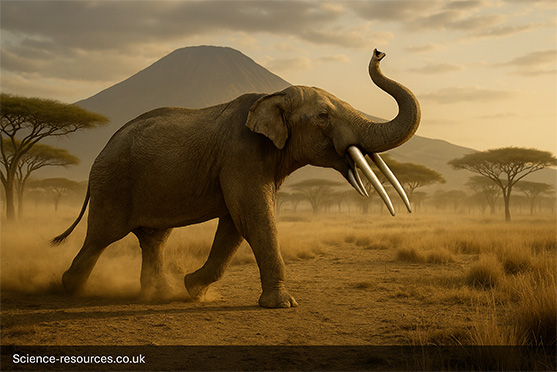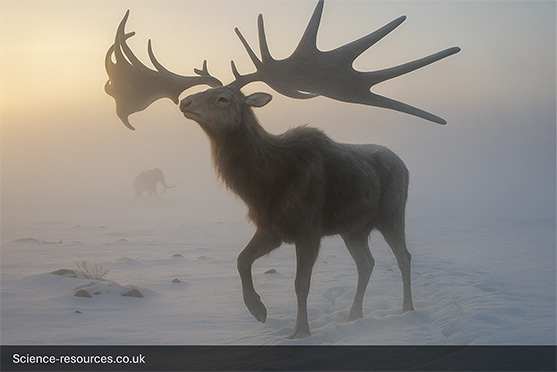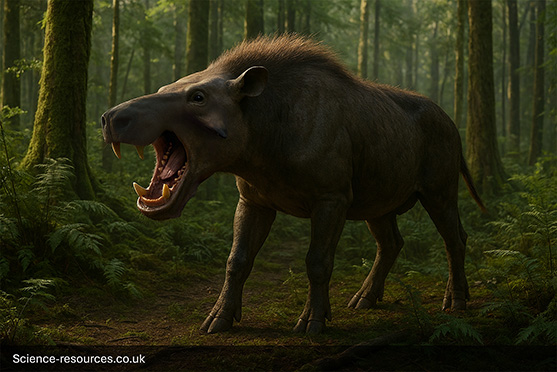Last updated: 4th August 2025
Where They Lived: Eurasia
Extinct Animals of Eurasia
Eurasia, the largest continental landmass on Earth, has been a stage for some of the most impressive megafauna in history. Its vast and varied landscapes, from the frozen steppes of Siberia to the temperate forests of Europe, supported an incredible diversity of prehistoric animals, especially during the Pleistocene Ice Age. Many of the most iconic Ice Age creatures, like the Woolly Mammoth and Woolly Rhino, were widespread across this landmass.
Beyond the Ice Age, Eurasia was home to unique and gigantic animals, such as the hornless rhinoceros Indricothere, one of the largest land mammals to ever live. The continent's fossil record provides a glimpse into the evolution of many of today's animal groups and the powerful forces of climate change that shaped life on Earth.
Featured animals from this location:
Indricothere
Indricothere was the largest land mammal ever to exist, living during the Oligocene. It was a hornless relative of the rhinoceros, with a long neck and massive body, feeding on treetop vegetation.
Woolly Mammoth
Woolly Mammoths were a giant, shaggy elephants that lived during the Pleistocene. they had long, curved tusks and a thick coat of fur, helping them survive in icy environments across Eurasia and North America.
Woolly Rhinoceros
Woolly Rhinoceros was a large Ice Age mammal adapted to cold climates. It had a thick coat of fur and a prominent curved horn, which it used to clear snow and graze on frozen grasslands.
Gastornis
Gastornis was a giant, flightless bird that lived in Europe and North America during the Paleocene and Eocene. It had a massive beak and imposing size, and may have been herbivorous or omnivorous.
Gomphothere
Gomphothere was a large, elephant-like mammal that roamed the Americas during the Ice Age. It had a long trunk and distinctive tusks, which it used to dig for roots and strip bark from trees. Unlike modern elephants, some species had four tusks and a flatter skull, helping them adapt to diverse environments.
Megaloceros
Megaloceros was a giant deer that lived across Europe and Asia during the Ice Age. It had enormous, wide-spreading antlers and a strong, muscular build, which it used for display and defense. Often called the "Irish Elk," it grazed in open woodlands and meadows, feeding on grasses and shrubs.
Entelodon
Entelodon was a massive, pig-like omnivores that lived during the late Eocene to Miocene. They had a huge head, strong jaws, and a bulky body, making them a formidable scavenger and predator.
You may also be intrested in:
- Extinct Animals: A-Z
- Dinosaurs: A-Z
Tags: Indricothere, Woolly Mammoth, Gastornis, Woolly Rhino, Eurasia
© 2012 science-resources.co.uk. All rights reserved | Design by W3layouts
Where They Lived: Eurasia
Extinct Animals of Eurasia
Eurasia, the largest continental landmass on Earth, has been a stage for some of the most impressive megafauna in history. Its vast and varied landscapes, from the frozen steppes of Siberia to the temperate forests of Europe, supported an incredible diversity of prehistoric animals, especially during the Pleistocene Ice Age. Many of the most iconic Ice Age creatures, like the Woolly Mammoth and Woolly Rhino, were widespread across this landmass.
Beyond the Ice Age, Eurasia was home to unique and gigantic animals, such as the hornless rhinoceros Indricothere, one of the largest land mammals to ever live. The continent's fossil record provides a glimpse into the evolution of many of today's animal groups and the powerful forces of climate change that shaped life on Earth.
Featured animals from this location:
Indricothere
Indricothere was the largest land mammal ever to exist, living during the Oligocene. It was a hornless relative of the rhinoceros, with a long neck and massive body, feeding on treetop vegetation.
Woolly Mammoth
Woolly Mammoths were a giant, shaggy elephants that lived during the Pleistocene. they had long, curved tusks and a thick coat of fur, helping them survive in icy environments across Eurasia and North America.
Woolly Rhinoceros
Woolly Rhinoceros was a large Ice Age mammal adapted to cold climates. It had a thick coat of fur and a prominent curved horn, which it used to clear snow and graze on frozen grasslands.
Gastornis
Gastornis was a giant, flightless bird that lived in Europe and North America during the Paleocene and Eocene. It had a massive beak and imposing size, and may have been herbivorous or omnivorous.
Gomphothere
Gomphothere was a large, elephant-like mammal that roamed the Americas during the Ice Age. It had a long trunk and distinctive tusks, which it used to dig for roots and strip bark from trees. Unlike modern elephants, some species had four tusks and a flatter skull, helping them adapt to diverse environments.
Megaloceros
Megaloceros was a giant deer that lived across Europe and Asia during the Ice Age. It had enormous, wide-spreading antlers and a strong, muscular build, which it used for display and defense. Often called the "Irish Elk," it grazed in open woodlands and meadows, feeding on grasses and shrubs.
Entelodon
Entelodon was a massive, pig-like omnivores that lived during the late Eocene to Miocene. They had a huge head, strong jaws, and a bulky body, making them a formidable scavenger and predator.
Tags: Indricothere, Woolly Mammoth, Gastornis, Woolly Rhino, Eurasia
© 2012 science-resources.co.uk. All rights reserved | Design by W3layouts
